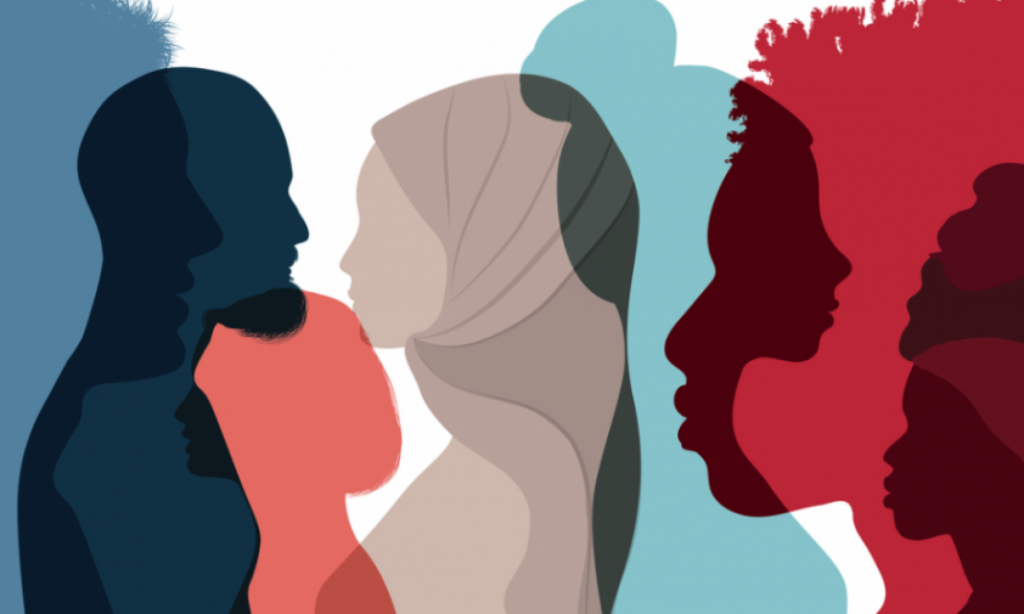During my initial research, I have consolidated my understanding of this concept and realized what Diversity is and that Inclusion has always been an uncertainty for Human Race. My first findings have explored how different factors have impacted our existence as people easily get judged because of their skin color, their gender, age, appearance, and size, and despite what initiatives to promote inclusion our civilized societies and strong economies have done, there is still lots of improvements needed to make this world a better place for everyone.
In order to proceed with my secondary research analysis, I have initially clarified the concept of Diversity and Inclusion and therefore questioned myself about its importance ad what are the factors that negatively impact its application.
Diversity definition:
In literature, there are many, and perhaps confusing definitions related to Diversity, however, the following have been considered more relevant for this project. According to Wellner, (2000) “Diversity can encompass many different human characteristics such as race, age, creed, national origin, religion, ethnicity, sexual orientation, and therefore it is representing a multitude of individual differences and similarities that exist among people”. Moreover a more recent definition has been given, by Deloitte (2015) where over 3500 survey respondents were millennials and considering Diversity as: ” the variety of perspectives working together to solve business problems” and ” offering roles and opportunities to all qualified candidates regardless of race, creed, gender, sexual orientation, age or religious affiliation” In other words, younger generations frame diversity as a means to a business outcome.
Inclusion definition:
Hodkinson, (2011) defines Inclusion as a “universal human right. The aim of inclusion is to embrace all people irrespective of race, gender, disability, medical or other need. It is about giving equal access and opportunities and getting rid of discrimination and intolerance (removal of barriers)” Moreover, according to Deloitte (2015) survey, Millenials consider inclusion mainly in the workplace as: “the place where people come together to accomplish one goal, being part of the process, where business relationships are formed because of daily interaction among team members and having open lines of communication, transparency, and strategic initiatives communicated to employees by executives.”
Why do Diversity and Inclusion matter?
- 1- Reduce Discrimination and Racism: If people are introduced to or become more aware of a different culture, race, gender in a diverse environment or society. You tend to become less discriminating because of your new world experience. (Diversity.social. 2021)
- Better Business Reputation and higher customer engagement: Companies that are dedicated to building and promoting diversity in the workplace are seen as good, more human and socially responsible organizations. (Diversity.social. 2021)
- Human connection: World Wide Vision, localized Experience.
- Productivity. People have different characteristics and backgrounds, they are also more likely to have a variety of different skills and experiences. (AMP.GlobalYouth. 2021)
What are the issues related to diversity?
- Racism discrimination: Assigning employees of a certain race different job duties, Prejudice and Stereotyping; attributing the same characteristics to all members of a group, regardless of individual differences, Racial Profiling (Ontario Human Rights Commission. 2021)
- Ageism discrimination: Not Hiring due to Age, Being Laid Off due to Age • Forcing an employee to take early retirement, Reducing or denying certain benefits. (Fenton, 2021)
- Sexualism discrimination: Gender Gap, for ex. wage and career progression, Restrictions on clothing, Female infanticide and genital mutilation. (Project, 2021)
- Sizeism discrimination: Discrimination based on body shape, such as disdain towards overweight or underweight, Consideration of “normal weight” as right weight. (The Guardian. 2021)
Industry examples of Discrimination and lack of Inclusion

- Abercrombie&Fitch
- 1049 Worldwide stores
- 65,000 Employees
- Foundation city: NY, Manhattan
- 2003, Sued for discrimination against Black people, Asians, and Latinos offering them less visible jobs in stockroom and shorter shifts. (theeagleonline.com)
- 2008, Sued for religious discrimination over failure to hire teens who wear religious head scarves. (eeoc.gov, 2010)
- 2015 Sued from 250,000 individuals following CEO’s statement “A lot of people don’t belong in our clothes, that’s why we hire good-looking people in our stores. Good-looking people attract other good-looking people, and we want to market to cool, good-looking people. We don’t market to anyone other than that” (thefashionlaw, 2018)

- Walmart
- 11,390 Worldwide stores
- 2.2 million employees in the US
- Foundation city: Bentonville, Arkansas
- 2010, sued by 4,500 Black truck drivers who applied to work for Walmart between 2001 and 2008 filed a class-action suit against the corporation for racial discrimination. (thoughtco.com)
- 2011, Several more lawsuits from West African immigrant employees after being fired by supervisors they allege sought to give their jobs to locals. (thoughtco.com)

- Amazon.com
- Worldwide leading ecommerce retailer
- 1.3 million employees worldwide
- Foundation city: New York, USA
- 2007, Shaun Simmons, a transgender man, claimed in a lawsuit that he faced harassment and retaliation while working at Amazon and was demoted and denied a promotion after telling his manager he was pregnant. (eu.usatoday.com)
- 2011, Black Amazon employees are promoted less often and receive harsher evaluations than their non-Black colleagues. (eu.usatoday.com)
- 2021, Five women who have worked in various roles at Amazon are suing the company, citing racial and gender discrimination. (eu.usatoday.com)
These are just some examples of lawsuits against worldwide leading businesses regarding Diversity and Inclusion. What really is concerning is that based on the examples provided above, discrimination is not limited to certain industries, companies, environments, or even cultures. The companies mentioned above are giants in the market they operate and therefore expanded internationally in the fashion industry, and large-scale distribution of goods and services, and this makes me realise the necessity and importance of discussing this topic and the affirmation of my project question.
Research Question:
How can we raise awareness about Diversity and Inclusion among creatives in the Fashion Industry in the U.K?
